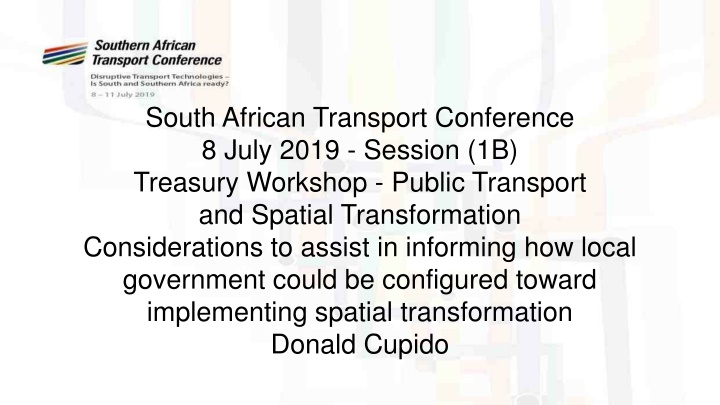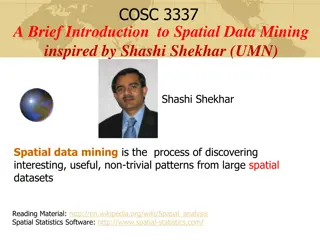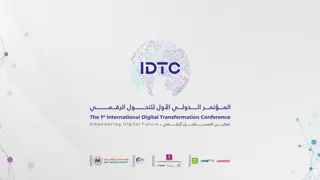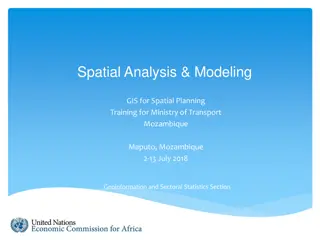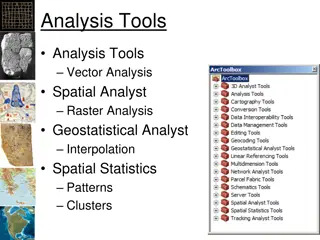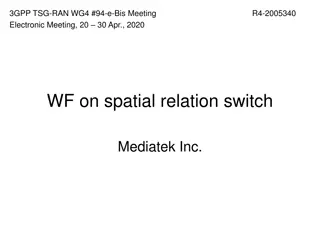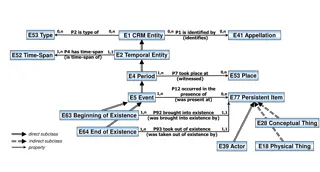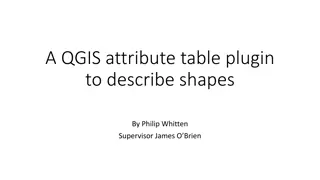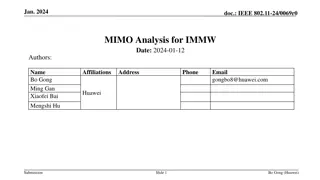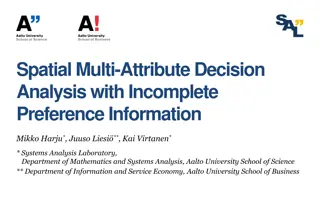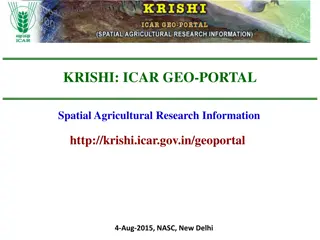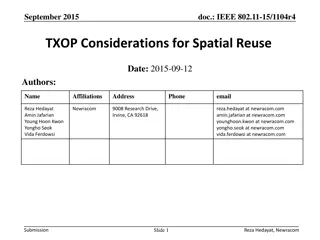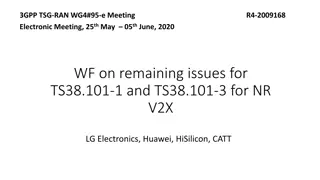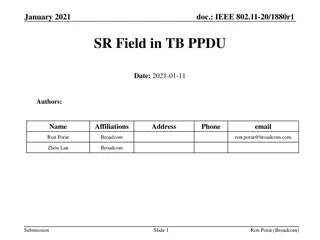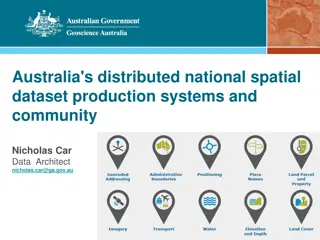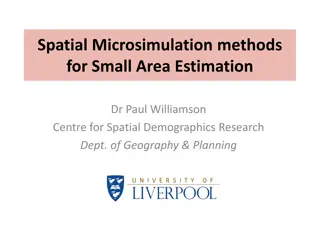Local Government Spatial Transformation Considerations
This content discusses considerations for implementing spatial transformation in local government, focusing on the constitutional framework, white paper on local government, and perspectives for transforming South African cities towards sustainable development and community engagement.
Download Presentation

Please find below an Image/Link to download the presentation.
The content on the website is provided AS IS for your information and personal use only. It may not be sold, licensed, or shared on other websites without obtaining consent from the author.If you encounter any issues during the download, it is possible that the publisher has removed the file from their server.
You are allowed to download the files provided on this website for personal or commercial use, subject to the condition that they are used lawfully. All files are the property of their respective owners.
The content on the website is provided AS IS for your information and personal use only. It may not be sold, licensed, or shared on other websites without obtaining consent from the author.
E N D
Presentation Transcript
South African Transport Conference 8 July 2019 - Session (1B) Treasury Workshop - Public Transport and Spatial Transformation Considerations to assist in informing how local government could be configured toward implementing spatial transformation Donald Cupido
Considerations to assist in informing how local government could be configured toward implementing spatial transformation Overview of the presentation Context -Global to local developmental context Context - Constitution of RSA and White paper on local government Perspectives Elements to Transform SA Cities Perspective - What is Required to Transform South Africa Cities Approach of placemaking and public space Illustrative Overview - Key Functions Requiring Integration Considerations toward implementing spatial transformation
Context - Global to Local Developmental Context New Urban Agenda AGENDA 2063 IUDF 3
Context - Constitution of RSA & Objects of LG The Constitution envisioned a strong Local Government and required Local Government capacity to be built by continuous (systemic) support from National and Provincial Government. It establishes category (A); (B); (C) municipalities Objects of Local Government Provide democratic and accountable government for local communities 1.Ensure the provision of services to communities in a sustainable manner; 2.Promote social and economic development; 3.Promote a safe and healthy environment; and 4.Encourage involvement of communities & community organisations in matters of LG 4
Context - White Paper on Local Government The vision of the White Paper on LG - strong Local Government, supported by a firm subsidiarity principle, original powers & provides that national legislation will provide for a mechanism to facilitate the allocation of powers and functions between the different categories of municipalities. Developmental local government is local government committed to working with citizens and .improve the quality of their lives. o Maximising social development, economic growth; integrating, coordinating; democratising development, empowering, leading, provision of household infrastructure and services, creation of liveable, integrated cities, towns and LED 5
Perspectives Elements to Transform SA Cities There is a need to think afresh about the broader urban management and governance framework, including institutional structure and capacities, coordination mechanisms, implementation procedures and resource mobilization - (Taylor. P, UN-HABITAT 2004) Need to utilise, coordinate and align all instruments available to ensure implementation and delivery through clustering policy, legislation and regulation, fiscal, financial, institutional, public asset management, knowledge management, and advocacy and leadership (Borraine. A, SACN 2004) Principles of spatial transformation - a change in power imbalances; the restructuring of space to achieve increased efficiency, spatial justice and equity, institutional transformation; developing organisational and managerial capacity; and a focused vision and plan to achieve a transformative goal (SACN 2016)
Perspective - What is Required to Transform South Africa Cities (SACN 2016) Transformation of: o Space - change how space is structured, owned, used and developed o Politics and power - vested interests preserving the status quo need to equalize the power relations aggravated by economic conditions o Institutions and IGR - local government level - developmental mandate for spatial transformation requires institutional arrangements to respond to integration and coordination required o Management and capacity the Built Environment functions requires co-production and cross-sectoral cooperation, and fundamental shift in the skills and capacity needed for transformation and dealing with complex land and land reform issues - building the capacity and skills of officials (as well as communities and other civil society actors)
Approach of placemaking and public space What defines a character of a city is its public space, not its private space. the common assets .. public spaces are an asset to a city. -- UN- HABITAT Joan Closi Matheu 2012 Ways to Improve Your City - (SUD-Net) 2012 Improve Streets as Public Spaces Create Squares and Parks as Multi-Use Destinations Build Local Economies Through Markets Design Buildings to Support Places Link a Public Health Agenda to a Public Space Agenda Reinvent Community Planning Create a Comprehensive Public Space Agenda Lighter, Quicker, Cheaper: Start Small, Experiment Restructure Government to Support Public Spaces
Illustrative Overview - Key Functions Requiring Integration High level Element/Aspect Local Government Functional Area Impacted on (assuming these structures exist) Spatial Planning, Land Use Management Spatial planning and land use management Transport and Roads Human Settlements Institutional structure, capacities, resource mobilisation Coordination Asset management Transport and Roads Department Human Settlements Department Municipal Manager, EMT, Corporate HR Municipal Manager, EMT Asset Management, Sector Departments, Property Development
Illustrative Overview - Key Functions Requiring Integration High level Element/Aspect Local Government Functional Area Impacted on (assuming these structures exist) Knowledge management Knowledge Management Department Political processes Mayor and political structures Intergovernmental Relations Mayor, Municipal Manager and EMT Social and economic development Community services, Economic Development Safety and health Health, Traffic Services, Law Enforcement Community involvement and participation Mayor, Community Services, Special Units
Illustrative Overview - Key Functions Requiring Integration High level Element/Aspect Local Government Functional Area Impacted on (assuming these structures exist) Electricity, Roads, Water, Sewer Sector Departments, Mayor and political structures Built Environment Sector Departments Sector Departments, Corporate Project Management, SCM Sector Departments, Corporate Finance Infrastructure and services Policy, legislation (bylaws) Regulations Implementation Finance
Considerations toward implementing spatial transformation Some critical factors Political and administrative champion (leadership) Mayor, mayoral committee & MM and EMT (leadership) Feasibilty of Special Unit toward mainstreaming over time Integration of processes and workflows (built environment functions)(corridors, nodes, TOD, regulatory toolkits) Secured skills, capacity, competencies Secured, guaranteed funding steams Monitoring, lessons, feedback loops Community engagement and participation (NIMBY, LULU s) Strategies, policies, programs, projects Functional relationships Implement HR
Considerations toward implementing spatial transformation Some additional considerations: Is a 5 year political term sufficient for traction ? 1800:1500:20 Strategies to manage Not in My Backyard (NIMBY) and Locally Unwanted Land Uses (LULU s) Opportunity for the approach on place-making and public space Synchronise with the environmental strategies and programs Build in opportunities - the 4th Industrial revolution Technology platforms Innovation centres Research to get a better understanding on vested interest Platforms for municipalities to share lessons and experiences Is the state of rail enabling TOD at stations along rail corridors how long will the turnaround strategy take? Is the BRT and the minibus taxi facilities encouraging private sector investment ?
